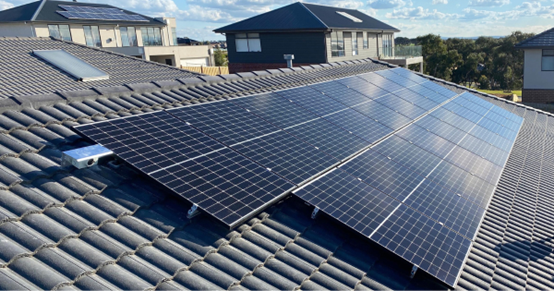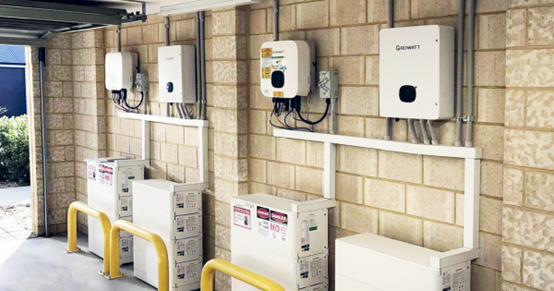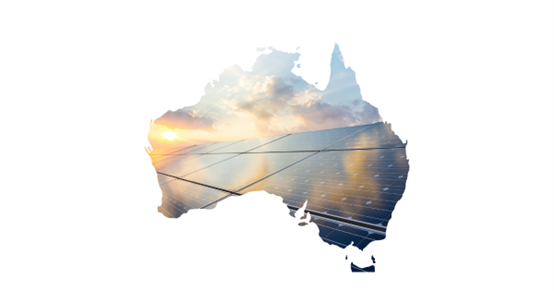

 Language
LanguageFeb 28, 2024
By 2029, solar installation in Australia is expected to double from the current 41.64GW to 80.41GW – at a Cumulative Annual Growth Rate (CAGR) of 14.07%. With the rapidly growing demand for solar energy, Warwick Johnston, the managing director of Australia’s Leading Solar Consultancy, Sunwiz, believes the industry will "start off strongly in 2024" as consumers race to protect themselves from high electricity prices.
However, the rapid solar installations could place unprecedented strain on the energy market, potentially threatening grid stability for Australians. In response to the proliferation of solar installations in Australia, the federal and state energy ministers agreed on the need for a national roadmap for managing customer-owned energy resources, taking a national approach to ensure solar installations do not disrupt the grid, and reassuring the coal, wind, and hydro industries about future business viability in Australia.
In light of this, we have compiled a list of industry experts' solar predictions and forecasts to see what they have to say about the solar energy market in 2024.

"Households are increasing the size of the units they buy… average system reached almost 10.5kW"
- Warwick Johnston, Sunwiz Managing director
With the fall in solar panel prices, combined with the increase in power prices from the grid, the payback period for new solar systems has shortened over the years. As such, the demand for solar energy will continue to gain momentum as solar becomes more accessible and economical for Australians. Warwick Johnston, the managing director of SunWiz, mentioned it makes sense for Australians to increase the solar panels in their homes/companies, as there is an increasing demand for electricity in general – with the ever-increasing need for more appliances and lately, the EVs – leading the way to high electricity consumption in the Australian market.
Moreover, there has been a growing concern for power outages and overall grid instability as the energy transition of the country from coal-powered stations to solar energy has led to coal stations closing. According to AEMO, approximately 20% of the country’s coal, gas, and diesel generation fleet, which totals up to 6730 MW is set to close in the next decade. This could spur greater growth for solar energy in Australia, as consumers switch to solar to mitigate the possibility of the grid’s inability to meet their surging demands for power. It is also to ensure that there is power stability within their households/ businesses as there is a growing number of electrical appliances that need a large amount of power like the EVs. Therefore, as Australians prepare for reduced coal-powered electricity and increased power requirements in households, the potential for solar energy to grow in Australia is unparalleled.

Currently, two mechanisms are present to limit power exports to the grid: the Victoria Emergency Backstop Mechanism and the South Australia Dynamic Export Limit Project.
The Victoria Emergency Backstop Mechanism requires network service providers to be able to remotely turn down or turn off rooftop solar systems during an energy supply emergency to avoid blackouts. The emergency backstop mechanism will be used only when required by the Australian Electricity Market Operator (AEMO), and only in extreme circumstances when solar exports are too high to manage safely. It is designed to protect against the risk of future grid instability as a result of transmission cables gradually being worn down by the increasing power exports from solar users, who have increased at an exponential rate in Australia since the introduction of various government incentives to encourage households to switch to solar energy. As such, the Australian government drafted this policy to better manage the country's future energy situation, thereby protecting it from excessive power exports that could possibly place a huge strain on the grid.
Similarly, the South Australia Dynamic Export Limit Project limits power exports to 10 kW per phase to better manage the stress on the grid's transmission cables. Both projects were carried out in tandem with existing solar incentives to better control the nation's increasing solar user base and assist in the country's adoption of renewable energy at a more sustainable rate that would not compromise the power grid's reliability.

Technological advances in the solar industry have extended the average lifespan of solar panels and inverters, leading to higher levels of energy production and power reliability for end users. With rising electricity demand, more households are looking to add solar panels, and many plan to retrofit batteries into their inverter systems in the future. What lies ahead is the power stability brought by solar – especially when the financial benefits that will quickly kick in after 5 years of installation – enticing Australians to look for better solar products and energy storage systems to become completely self-reliant in energy consumption.
In fact, SunWiz research has revealed that approximately millions of Australian families are completely energy self-sufficient, relying on the abundant solar energy available for use in the residential, commercial, and utility sectors. More solar installations are expected in Queensland and New South Wales, as residents advocate for a sustainable lifestyle to combat climate change. Families and corporations that use clean energy to power their operations would also benefit financially from this. Overall, there are numerous opportunities and reasons for Australians to continue using solar to power their daily lives, and we can expect a larger but more consistent increase in solar installation in 2024.

"Ever-rising pressure from investors and customers is expected to continue to push large companies to pledge their commitment to work toward a low-carbon transition"
- Roy Weidberg, Head of ESG
At COP27, the Australian government signed an agreement to push for decarbonization, promising to achieve net zero carbon emissions by 2030, which can be accomplished through an accelerated transition to renewable energy. After the conference, the Australian government has agreed to limit global temperature rises to 1.5C above pre-industrial levels, pushing and encouraging big corporations to pledge their commitment by offering STC and subsidies to switch to solar. This campaign worked well – with households and businesses adding 921 megawatts of solar photovoltaics in December 2023. As a result, Australia's solar uptake is expected to increase fivefold by 2025.
While it is true that solar brings about immense financial and environmental benefits to the Australian community, however, the quickly growing demand for solar could overload the current grid system in the country. Luckily, the government has put in place cooling measures to limit the solar uptakes in the country, but the future is still bright for solar! Based on the consistent rise in solar power installations across the nation, it appears that Australians are becoming more accepting of solar energy, particularly in light of recent advancements in the energy storage industry and the gradual decline of coal-fired power plant power. All of these push and pull factors work together to encourage Australians to embrace solar energy to better safeguard their future in this electrified era, where there is an ever-increasing demand for electricity for new technology and appliances. All things considered, Australians can anticipate an increase in solar projects and installations both this year and for many years to come as the nation moves towards sustainable energy as a more environmentally friendly and self-sufficient way to meet its energy needs.
 Subscribe to our newsletter
Subscribe to our newsletterSubscribe Now!
Subscribe
Insert your details below to receive information
*Enter Verification Code:


© Growatt New Energy All Rights Reserved

